
Archives

Archive for July, 2010 | |||||||||||||||||||||||||||||||||||||||||||
Watsons Are ForeverPosted on July 8, 2010 | Click for larger images
| Hamer started working with Jeff Watson in 1984. Jeff's first Hamers were Vectors. Collaborating with Jeff, we soon thereafter introduced the Watson V, a sleek instrument with beveled wings coming to sharp points. The Watson Vs featured the 24 3/4" (medium) scale length found on most Hamers at the time. We built a a number of variations on the theme, including Watson V Doublenecks. We inlaid the fingerboards with Boomerangs. We installed LED lights in the fingerboards. We built in Nady wireless systems. It was the '80s. Night Ranger was touring the globe, treating us to their big power ballad sound. It wasn't until 1988 that Jeff asked for an adaptation of our Sunburst Carved Top guitar (later re-named the Studio Custom). The changes to the Carved Top were numerous. The scale length drove many of these changes. Jeff asked for a 25 1/2" scale but he also wanted 27 frets. The extended fingerboard created the need for a deepened treble cutaway. Jeff's guitars generally featured crown inlays and a blended heel at the neck joint. PJ Marx were his pickups of choice at the time. 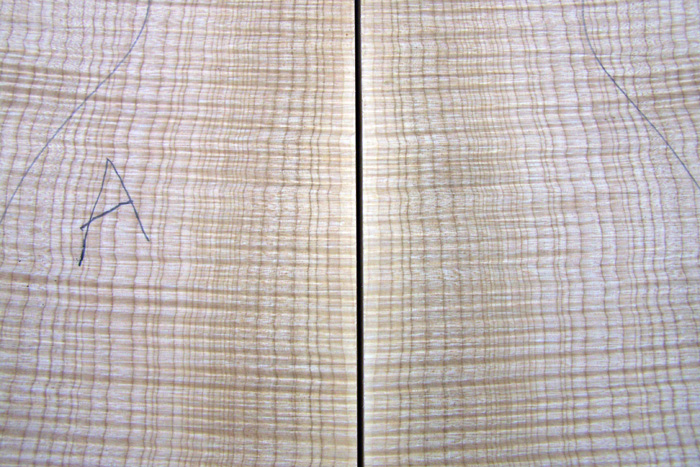
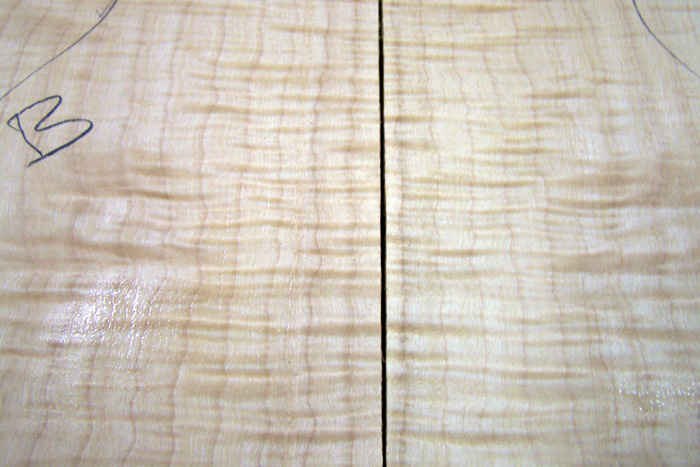
The '80s have come and gone. Though we have not catalogued it for years, the Jeff Watson model just doesn't go away. We recently received an order for a Watson model. We welcomed the order; they're awesome guitars. We started by sending the customer photos of a seven different flame maple billets to choose from. 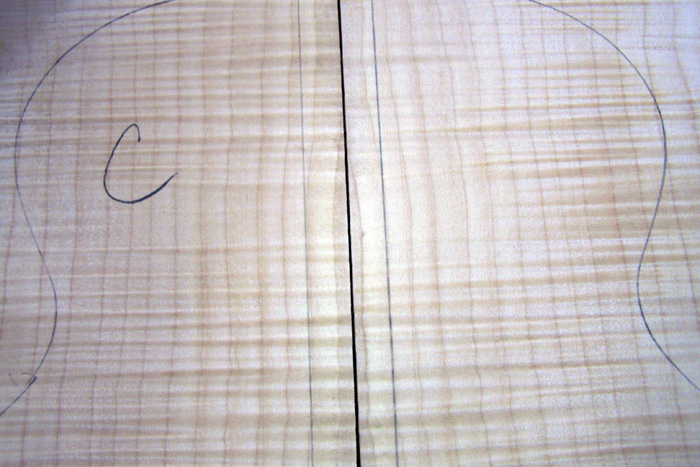 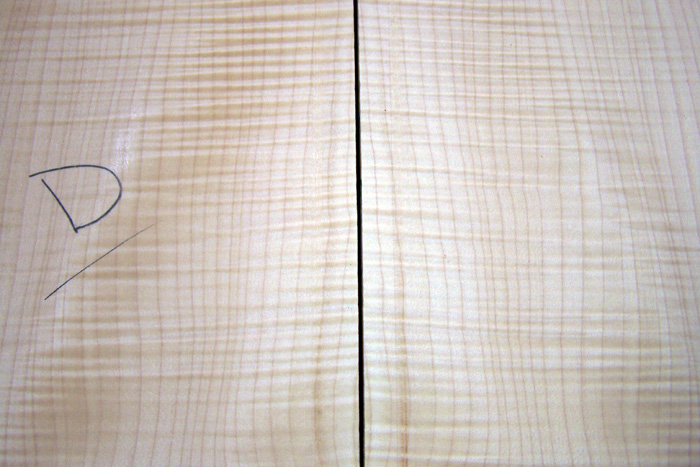 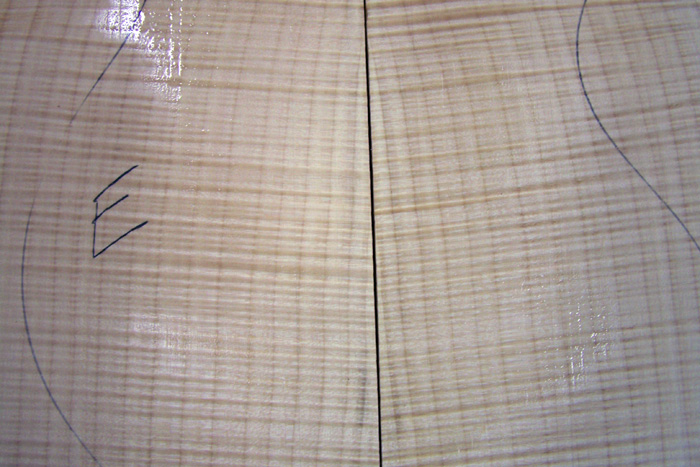 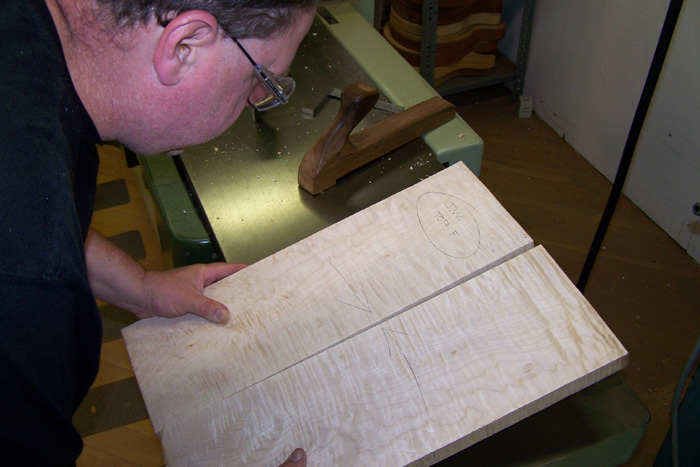 He chose billet "F". Here's Tom Maule bookmatching the chosen figured maple top. 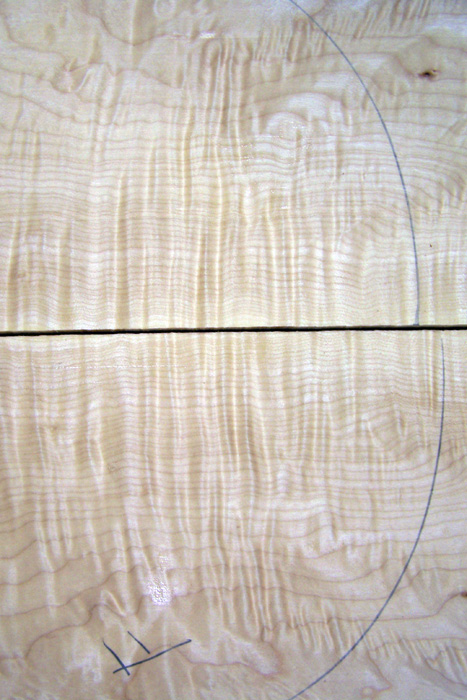 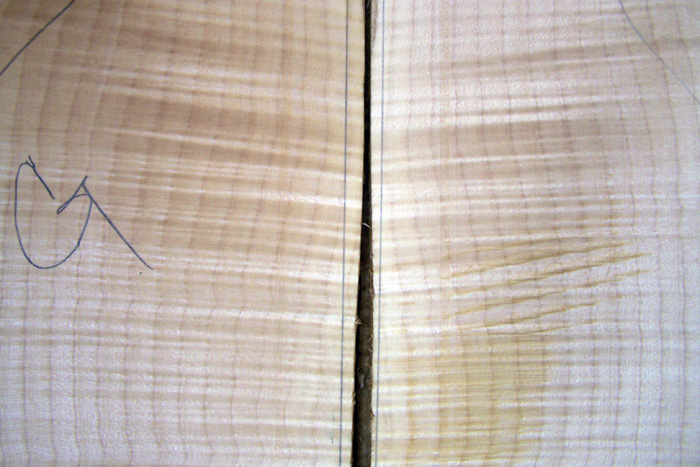 Tom then bonds the bookmatched top to a one piece Honduran mahogany back. The body is shaped and mounted to a second piece of mahogany that serves as a template. The template sits on a pin that extends from the underside of the router bed. This allows us to locate and execute the various routs. 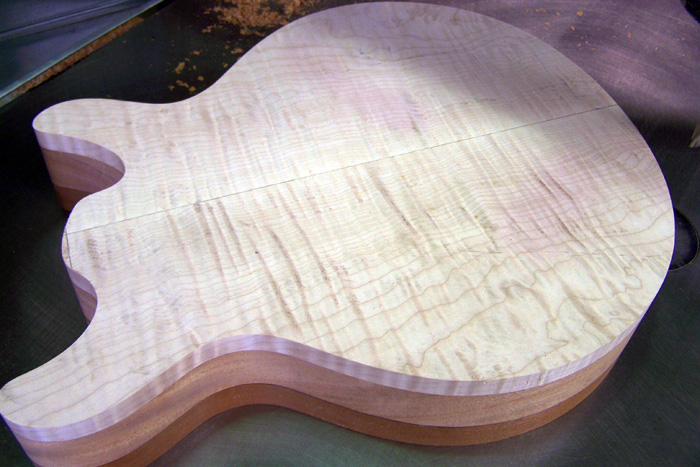 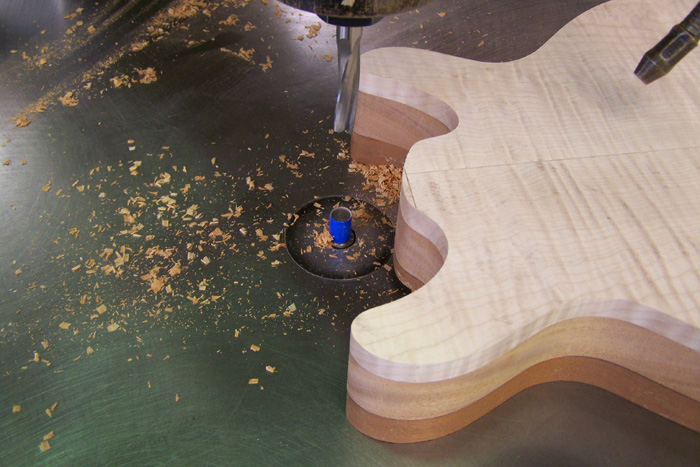 Now the routing process starts. 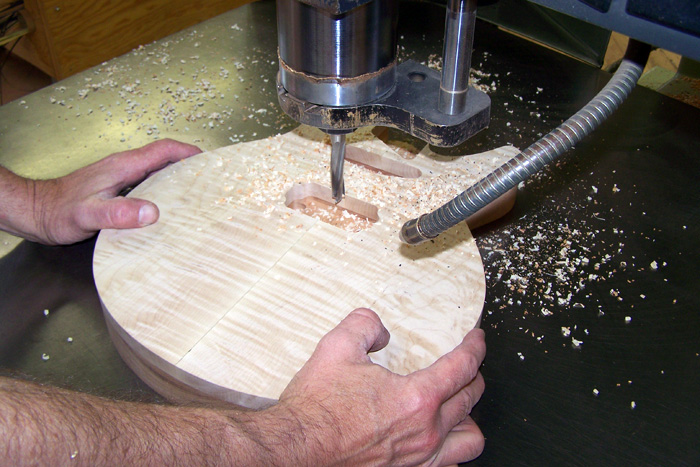 We rout out the neck pocket, the single coil pickup and the humbucker from the face of the guitar. 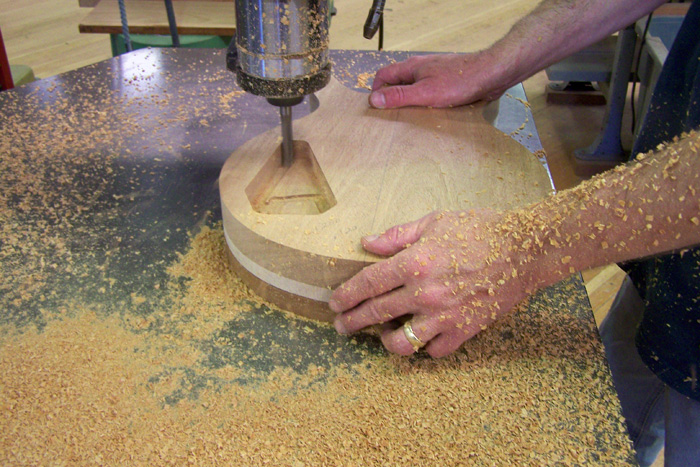 We then rout out the cavity for the rear mounted electronics. 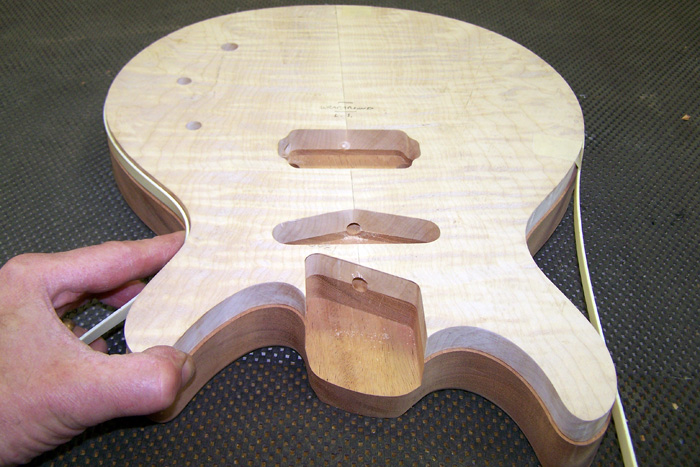 This Watson is being bound with a single ply of Ivoroid binding. 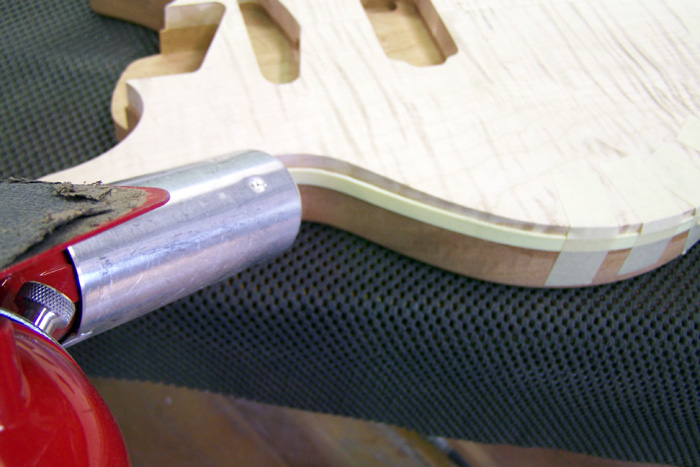 We use a heat gun to render the celluloid binding more pliable. 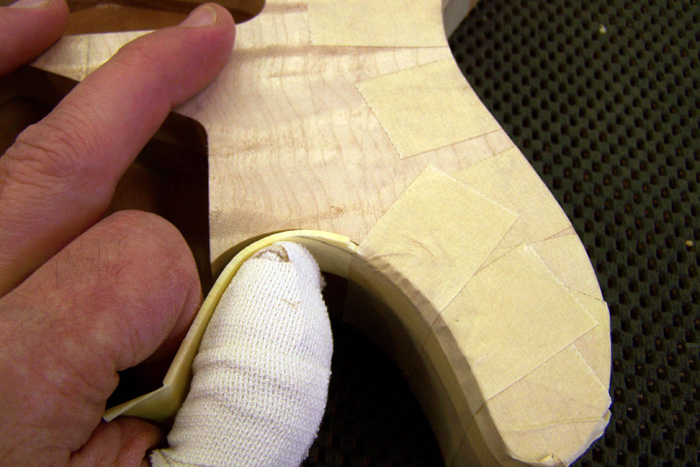 This pliability is especially important when binding the tight radiuses in the cutaways. 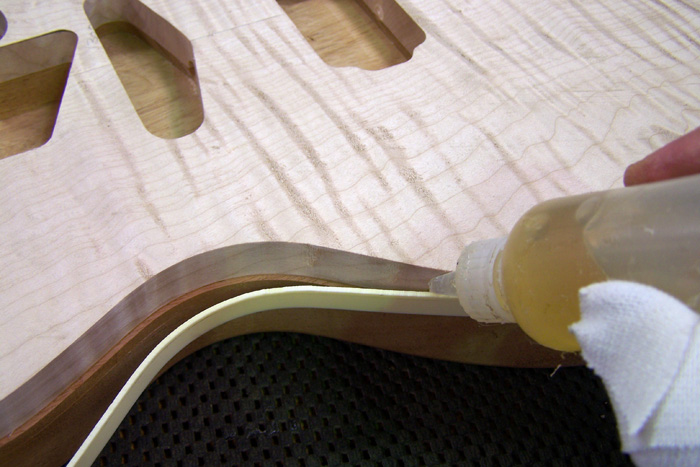 The binding is bonded into the channel using a 3M adhesive specially developed to adhere to both wood and the celluloid material. 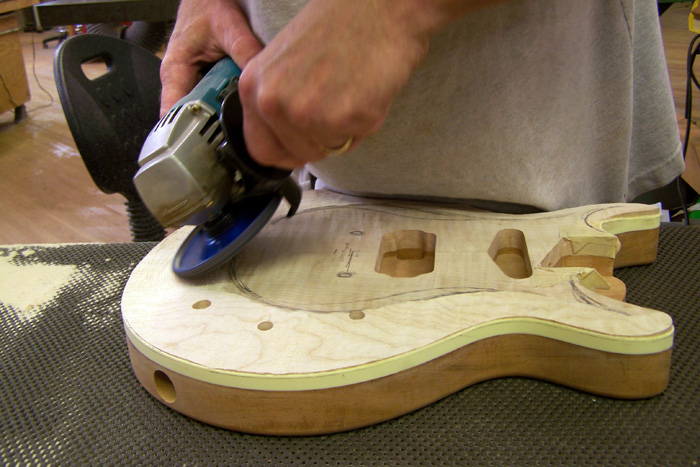 Once the body is bound, we begin carving the top. Like the Artist Ultimate, the Watson too is hand carved. We start with a hand held grinder and move on to scrapers and sandpaper. 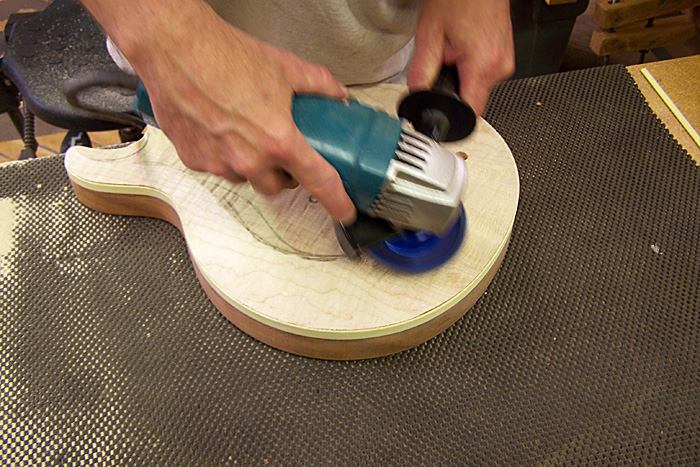 Here's another view of the rough carving process. You can see how we first sketch out the rough shape of the carve in pencil. 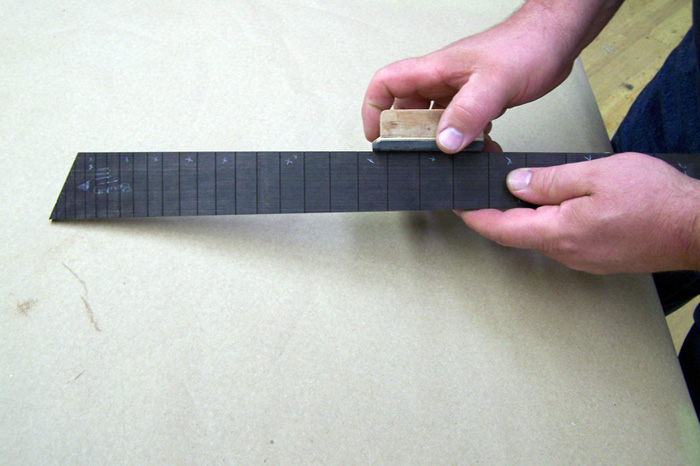 It's time to change gears and do some work on that beautiful piece of jet black African ebony that will become the long scale 27 fret fingerboard. The customer asked for dots rather than crowns on this guitar so the ebony will really be featured. 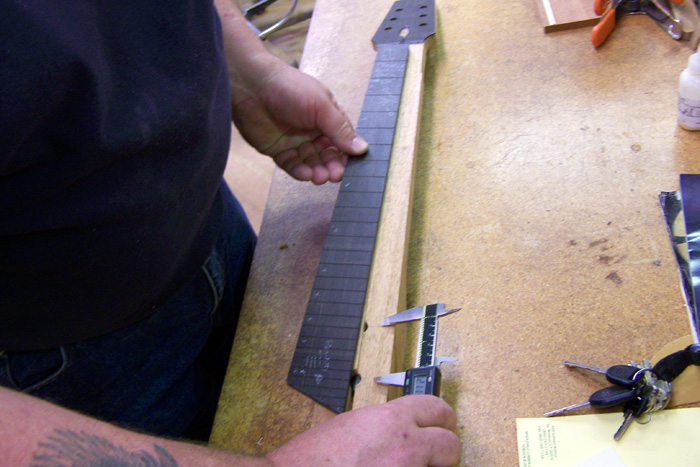 We had completed the basic neck some days earlier. 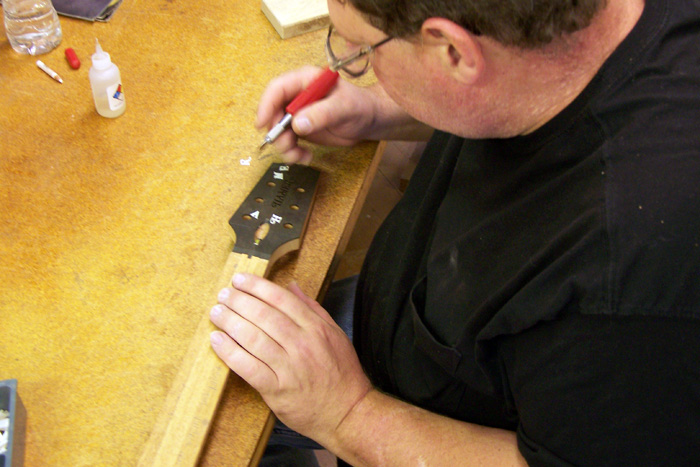 The ebony fingerboard is matched to an ebony peghead overlay. The Hamer logo is inlaid into the ebony overlay. Inlaying the mother of pearl Hamer logo, letter by letter, is always fun. We've made some real progress on this Watson. We'll be sure to update you as it moves further along. 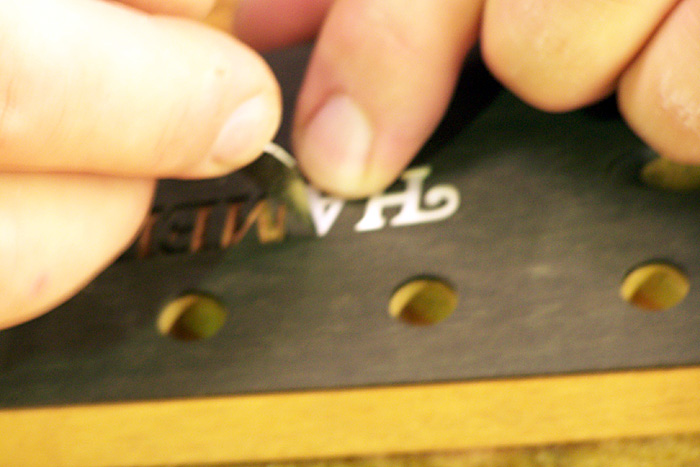 Tiger Eye BeautyPosted on July 14, 2010We thought that you would like to see this Artist as it makes its way to life. Like with all Hamers, we hand sand the finish. It often surprises people how often we level, or sand, our finishes. To achieve the depth of a Hamer finish, we level our guitars three times during the finishing process. We start by leveling the guitar after the first four coats of clear lacquer have been sprayed. We use 320 grit sandpaper for this leveling. We then spray three more coats of clear and level a second time, using 400 grit sandpaper. After the last three coats of finish have been sprayed there is a final leveling. On the final level we start with 800 grit paper and then progress through 1200, 1500 and 1800 grit. In sanding with progressively finer paper, we retain an extremely flat finish and only have to perform a minimum amount of buffing to bring out the luster in the guitar. We think that the results speak for themselves. After leveling and buffing, the guitar is ready to be fitted with its component parts. 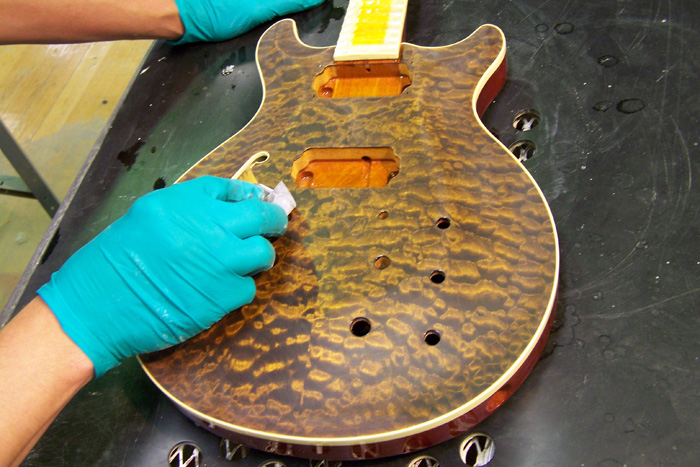 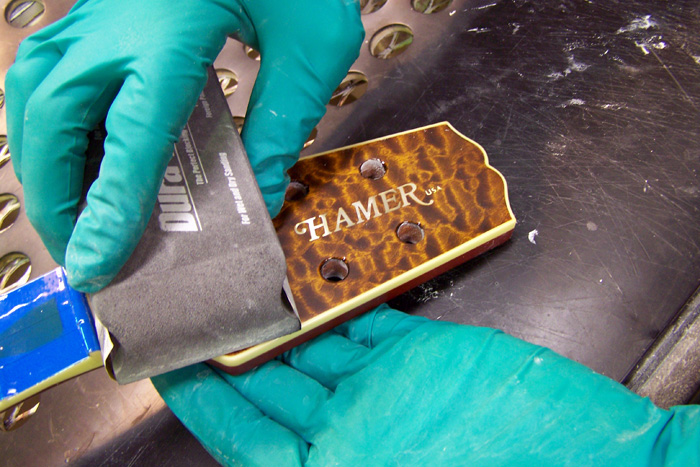 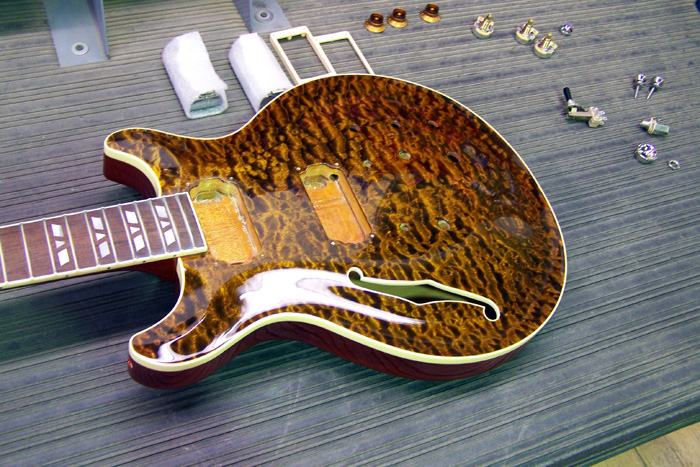 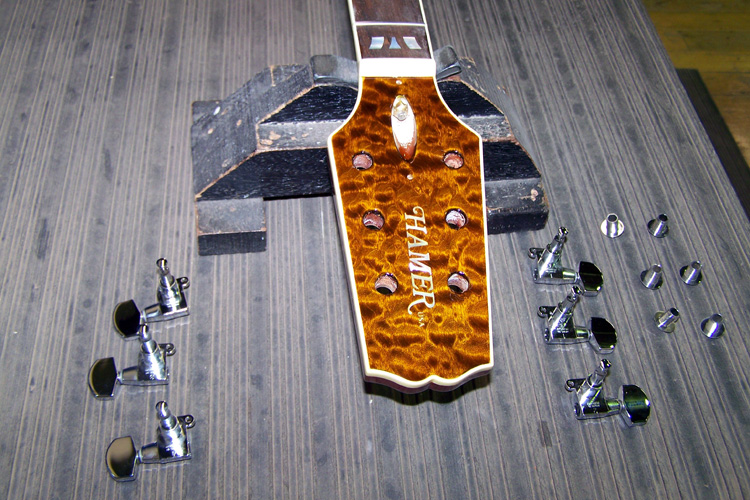 Keeping our workbenches clean and well organized enhances accuracy and minimizes the chance that a guitar will be damaged during assembly. We still hand wire all Hamers. The proper tools are at the ready. Another beauty is born. 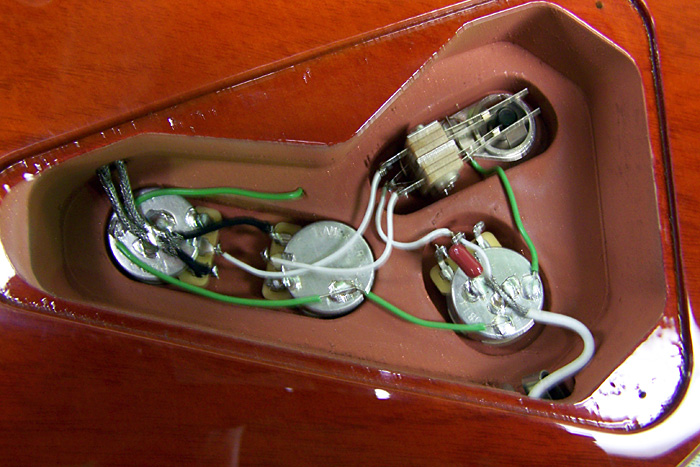 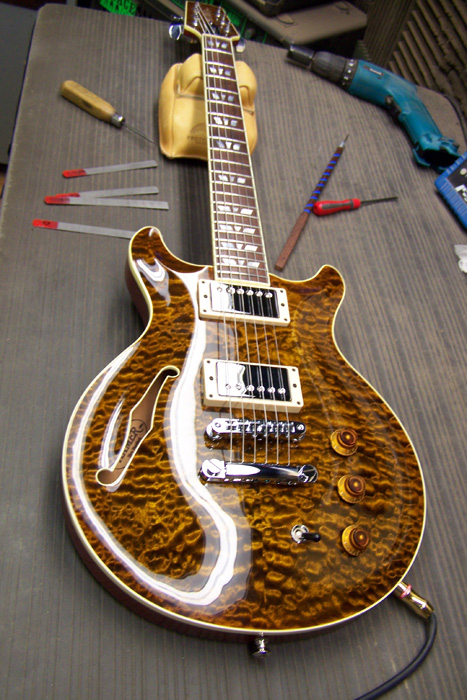 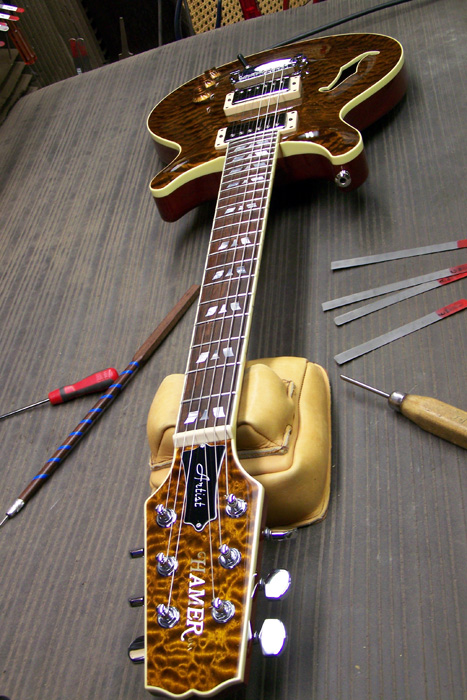 Anticipation...Posted on July 14, 2010Here's the bretheren spirit of the Artist Custom Tiger Eye that we just posted. This lefty Studio Custom has been sprayed and leveled twice. It now will dry, get its third level, go through buffing, be assembled and finally be set up. 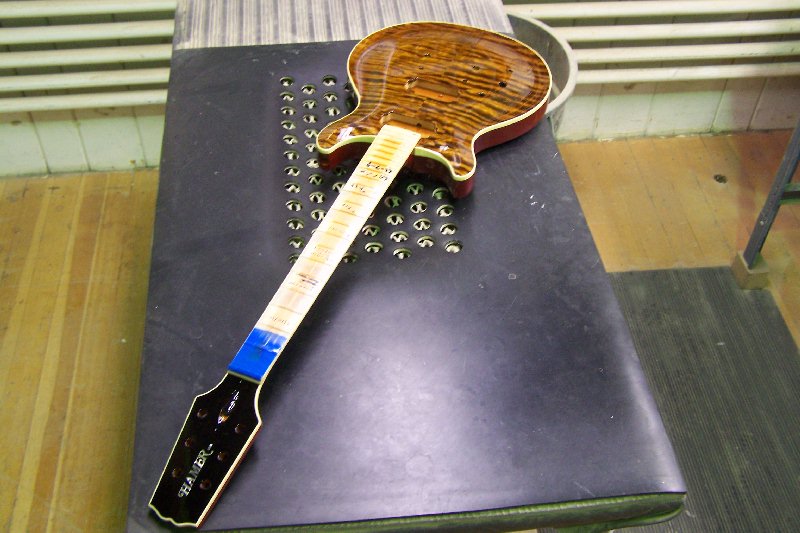 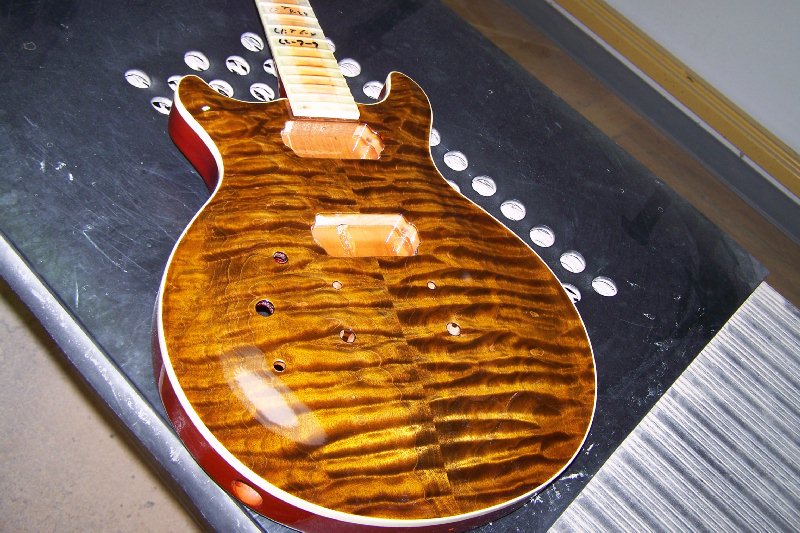 We'll start the third level after we return from our vacation shutdown on August 6th. 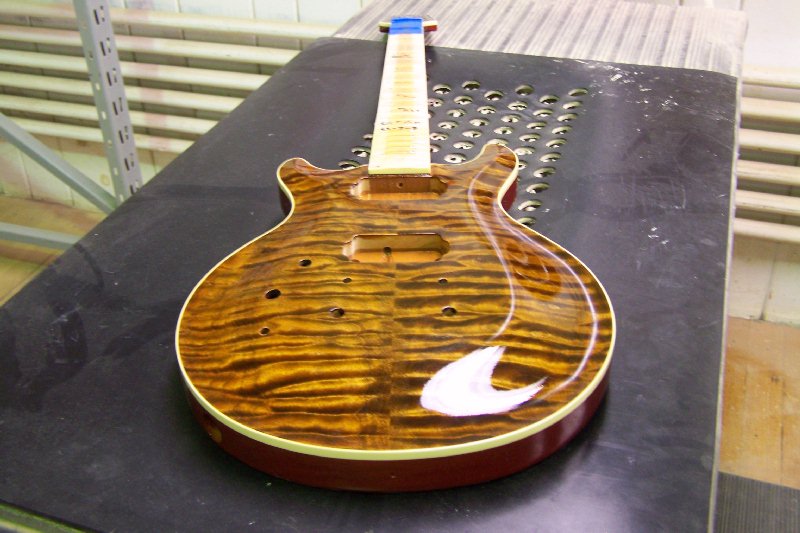 We hope that these shots will stabilize the future owner until we can complete this gem. Previous Month
| Next Month
| | |||||||||||||||||||||||||||||||||||||||